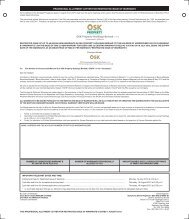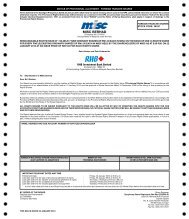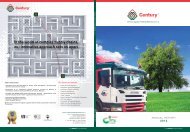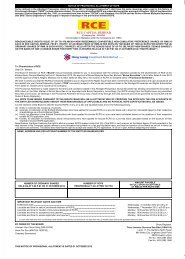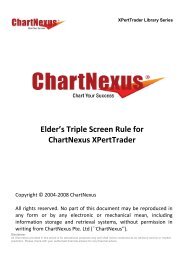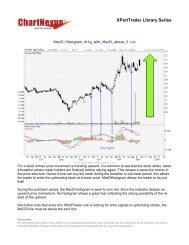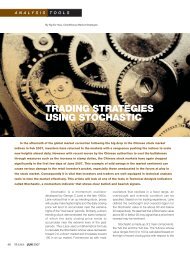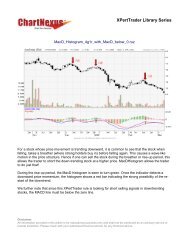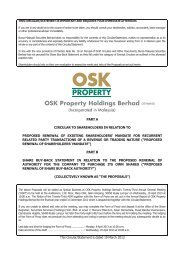L a p o r a n T a h u n a n 2 0 0 0 A n n u a l R e p o r t - ChartNexus
L a p o r a n T a h u n a n 2 0 0 0 A n n u a l R e p o r t - ChartNexus
L a p o r a n T a h u n a n 2 0 0 0 A n n u a l R e p o r t - ChartNexus
You also want an ePaper? Increase the reach of your titles
YUMPU automatically turns print PDFs into web optimized ePapers that Google loves.
Notes to the Financial Statements (continued)For the financial period of seventeen months ended 31 December 20003 SUMMARY OF SIGNIFICANT ACCOUNTING POLICIES (continued)(c)Accounting for associated companiesInvestments in associated companies are accounted for in the consolidated financial statements using theequity method of accounting. Associated companies are companies in which the Group exercises significantinfluence and which is neither a subsidiary company nor a joint venture of the Group. Significant influenceis the power to participate in the financial and operating policy decisions of the associated companies butnot control over those policies.Equity accounting involves recognising in the income statement the Gro u p ’s share of the results ofassociated companies for the financial period. The Group’s investments in associated companies are carriedin the balance sheet at an amount that reflects its share of the net assets of the associated companies.Equity accounting is discontinued when the carrying amount of the investment in an associated companyreaches zero, unless the Group has incurred obligations or guaranteed obligations in respect of theassociated company.Unrealised gains on transactions between the Group and its associated companies are eliminated to theextent of the Group’s interest in the associated companies; unrealised losses are also eliminated unless thetransaction provides evidence on impairment of the asset transferred in which case such impairment arecharged to the income statement immediately. Where necessary, in applying the equity method, adjustmentsare made to the financial statements of associated companies to ensure consistency of accounting policieswith the Group.(d)Goodwill on consolidationGoodwill arising on consolidation represents the excess of the fair value of purchase consideration ofsubsidiary and associated companies acquired over the Group’s share of the fair value of their separable netassets at the date of acquisition.Capital re s e rve arising on consolidation (negative goodwill) re p resents the deficit of the fair value ofpurchase consideration of subsidiary and associated companies acquired over the Group’s share of the fairvalue of their separable net assets at the date of acquisition.Goodwill on consolidation is firstly written off against capital reserve on consolidation to the extent of theamount maintained in the balance sheet. In all other cases, goodwill on consolidation is charged to theincome statement immediately.Negative goodwill is credited to capital reserve on consolidation.(e)Revenue recognitionRevenue from sale of development properties is recognised based on the percentage of completion method.The stage of completion is measured by reference to the physical proportion of work completed as apercentage of total physical work of the project as certified by duly appointed consultants.Revenue from sale of completed land and bungalow lots is recognised in accordance with the terms of thesale and purchase agreements.Quarry and land lease rental income are recognised on a receivable basis.Monthly subscription fees and fees for services rendered by the equestrian operations are recognised on areceivable basis.Revenue from construction contracts is recognised based on the percentage of completion method. Thestage of completion is measured by reference to the proportion that the contract costs incurred for workp e rf o rmed to date bears to the estimated total costs for the contract as certified by duly appointedconsultants.Management fees, project management fees and rental income are recognised on a receivable basis.Interest income is recognised as it accrues unless collectibility is in doubt.Gross dividends from investments are taken up in the financial statements when the Company’s right toreceive payment is established.44




